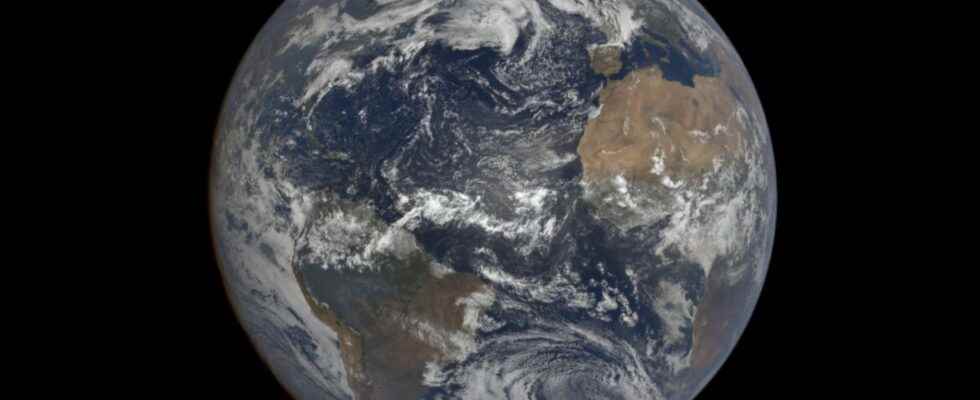Our Planet is made up of different geological envelopes, the best known of which is certainly the one we have under our feet: the continental crust. Often considered as an entity, the continental crust nevertheless presents a complex structure and great mineralogical heterogeneity.
You will also be interested
The continental crust constitutes, with the oceanic crust, the outermost geological envelope of the Earth. We often speak of the earth’s crust. She overlooks the coat, whose composition and properties physical are very different. Continental and oceanic crusts also show large divergences in matter decomposition.
The continental crust forms the bedrock of the continents. Generally seen as a geological “entity”, it nevertheless presents a complex architecture and is far from uniform from a mineralogical point of view.
Average structure and composition
On a large scale, continental crust is often considered to be felsic in nature, i.e. composed mainly of igneous rocks rich in silica, oxygen and aluminum, as the granite. In the intra-continental area and outside rift zones or margins, it is 30 kilometers thick on average, which is much more than the oceanic crust. But its thickness can climb up to 70-80 kilometers under the mountain ranges. Conversely, at the level of the continental borders (the margins), its thickness decreases more or less gradually until it completely disappears, giving way to the oceanic crust.
With an average density of 2.7-2.8, continental crust is relatively “light” compared to oceanic crust of density 2.9 or mantle rocks of density 3.3.
But this is only an average because in detail, the continental crust is not homogeneous from a chemical and physical point of view. It is notably divided into several levels, two or even three, defined thanks to the variations of the gears seismic waves. Most often, this differentiates the upper crust from the lower crust, but some studies suggest the presence of a middle crust. If the composition of the upper crust is rather well defined due to its accessibility for the campaigns ofsampling, the composition of the middle and lower crusts is much less constrained and is most often based on indirect data.
However, if the continental crust shows a vertical organization, it is also very heterogeneous on the horizontal plane. This strong heterogeneity is linked to its long and complex geological history (more than 4 billion years in places) and its perpetual reworking in connection with tectonic (burial, uplift), volcanic processes, as well as surface processes ( erosion, chemical weathering, sedimentation, diagenesis). Thus, the exact composition of the continental crust can only be defined for a specific area.
The upper continental crust
Overall, however, it appears that the upper crust is globally of grano-dioritic composition, enriched in incompatible elements and depleted in compatible elements. As a reminder, the chemical elements incompatible are the elements that tend to migrate easily to the phase liquid during the process of partial fusion. The well known rare earth are part of. The compatible elements will, conversely, preferentially remain in the phase solid during the merger.
From a rheological point of view, the upper part of the continental crust has a rather brittle behavior.
The lower continental crust
Seismic waves show us that the lower crust does not have the same rheological behavior as the upper crust. She is more ductile. This change in physical property is mainly related to the increase in pressure with depth.
The study of the lower crust is much more complicated due to its non-accessibility. Knowledge of its composition thus comes mainly from seismic studies and analyzes of metamorphic rocks exposed on the surface through movements tectonics, but also from the study of granulites, which can rise to the surface as fragments trapped in magma.
Some models thus suggest that the lower crust could have a more mafic composition. Mafic rocks are silicate rocks rich in magnesium and in iron, such as gabbro. The currently most accepted hypothesis is that of a particularly heterogeneous lower crust, with a predominantly granitic composition but which can vary significantly depending on the tectonic and magmatic context. Thus, there could be locally large intrusions of mafic rocks. Due to the high temperatures and pressures prevailing at these depths, the rocks of the lower crust would be under amphibolite or eclogite facies.
The middle continental crust
Some studies suggest the presence of an intermediate level composed of migmatites. These are granite-type rocks, resulting from the partial melting of the continental crust.
This three-layer model is debated and it is possible that its presence is dependent on the tectonic context and the geological history of the region. Some models include this middle crust in the lower crust. The transition between the upper and lower crusts is therefore around 10 kilometers deep in these two-layer models, whereas in the three-layer models, the middle crust rises from 10 to 20 kilometers deep.
The Moho, lower limit of the continental crust
Finally, the base of the continental crust is marked by a major chemical and physical boundary, known as the moho. The continental crust indeed has a very different composition from the underlying mantle, which implies different rheological and physical behaviors: sudden increase in the density and speeds of seismic waves, in particular. The transition zone between these two terrestrial envelopes is therefore clearly visible on the seismic data.
Interested in what you just read?
.
fs12
